
IRIS login | Reed College home Volume 90, No. 4: December 2011
Reediana Briefs

Social Perspective: The Missing Element in Mental Health Practice, by Richard U’Ren ’60, emeritus professor of psychiatry at Oregon Health & Science University, was published by the University of Toronto Press in September. In his book, Richard investigates how access to income, education, and social affiliations buffers individuals against stress and facilitates coping. He demonstrates that those who lack access to such resources suffer the poorest health and the greatest mental distress. Adding a new dimension to understandings of mental health, mental illness, and psychological distress, Social Perspective offers a concise account of society’s impact on the individual.

Jack Bradbury ’63 and his wife and coauthor, Sandra Vehrencamp, published a second edition of their textbook, Principles of Animal Communication (Sinauer Associates). The new edition is in color, and both authors worked hard to recruit great photos (mostly from Flickr photographers) of various animals engaged in communicating. The heavy math and advanced theory in the first edition were removed from the hard copy text of this edition, but are still available free, online for anyone interested. “The field has moved ahead rapidly in the last decade and it took over five years to review the literature and write this totally new version,” says Jack, who also related that he would be providing Frank Gwilliam [biology, 1957–96] with a signed and dedicated copy. Jack retired in 2009 and Sandy in 2010, and now they plan on really having some time for efforts other than book writing!

In her book Honest Medicine (Innovative Health Publishing, 2011), Julia Schopick ’65 introduces four lifesaving treatments that have been effectively helping—and in some cases curing—people for 25–90 years. The treatments include low-dose naltrexone for autoimmune diseases such as multiple sclerosis, lupus, rheumatoid arthritis, Crohn’s disease, HIV/AIDS, and some cancers; the ketogenic diet for pediatric epilepsy; intravenous alpha lipoic acid for terminal liver disease and some cancers; and Silverlon for nonhealing wounds. (See Class Notes.)

Conscientious Objection in Health Care: An Ethical Analysis, by Mark Wicclair ’66, professor of philosophy at West Virginia University, was published by Cambridge University Press in 2011. Mark offers a comprehensive ethical analysis of conscientious objection in three representative health care professions: medicine, nursing, and pharmacy. He also explores conscientious objection by students in each of the three professions, discusses conscience protection legislation and conscience-based refusals by pharmacies and hospitals, and analyzes several cases. His book is a valuable resource for scholars, professionals, students, and anyone interested in this important aspect of health care.
The story “A Borrowed Heart,” by Deborah Ross ’68, appeared in the July/August 2011 issue of Fantasy and Science Fiction magazine. (See Class Notes.)
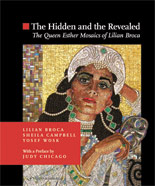
Gareth Sirotnik ’69 edited and produced a large-format art book, The Hidden and the Revealed: The Queen Esther Mosaics of Lilian Broca, which was published this year by Gefen Publishing. Lilian Broca is an award-winning artist, lecturer, and instructor, who says she chose the biblical Queen Esther “as a prototype for the courageous, selfless heroine, who wins against all odds.” (See Class Notes.)
Bonnie K. Rucobo ’74 has published her first middle grade novel, King Pachuco and Princess Mirasol (Wildflower Press, 2011), for children ages 8 to 12. The story relates the adventure of two characters who find themselves far from home, transformed into a Lilac-crowned Amazon parrot and a lovebird. They live for a time in the kitchen of an elderly Hispanic couple in Albuquerque, New Mexico, and then they plan their escape into the night sky and their perilous journey home. Bonnie’s birds Pachuco and Mirasol served as the models for the book, which she describes as a labor of love. Her goal in writing it was to provide positive role models for Hispanic children, and she is already at work on a sequel. (See Class Notes.)

Susan Reed ’81, an award-winning journalist who has covered almost every aspect of the workplace for 25 years for CBS News, the New York Times, the American Prospect, and other publications, has written The Diversity Index (AMACON Books, 2011). Based on her groundbreaking study of Fortune 100 companies, the book analyzes the long-term, widespread effectiveness of the Plans for Progress protocol developed in 1961, and reveals the stories behind the few companies that have made a difference, breaking down the 10 simple steps required for an organization to fully develop integration, keep it growing, and empower its employees to develop new products and markets. Susan currently writes a business column for the international news website GlobalPost.com.
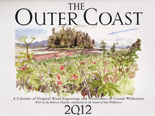
Rebecca Poulson ’86 has published the Outer Coast 2012 calendar, which features her original wood engravings and watercolors, as well as poetry on an “into wilderness” theme, including a contribution by John Daniel ’70. “Thanks to Ellen Stauder [English, 1983–] and Bert Brehm [biology, 1962–93].” Rebecca has been publishing an annual calendar for several years and remembers doing typesetting and desktop publishing on the original Apple computers that arrived at Reed in 1986.

Phyllis Behrens Gerstenfeld ’88 is the author of CJ: Realities and Challenges. Using the text’s framework of observe, investigate, and understand, students learn to recognize the myths and interpret the facts underlying the American criminal justice system and gain greater understanding of its complexities. Additionally, her book Hate Crimes: Causes, Controls, and Controversies is now in its second edition (Sage Publications, 2010). Phyllis also writes under the pen name Kim Fielding and has published her second novel, Flux (CreateSpace, 2011). Ennek, the son of Praesidium’s chief, has rescued Miner from a terrible fate: suspension in a dreamless frozen state called Stasis, the punishment for traitors. As the two men flee Praesidium by sea, their adventures are only beginning . . . Flux is a sequel to Phyllis/Kim’s novel Stasis. (See Class Notes.)

Noah Iliinsky ’95 has cowritten Designing Data Visualizations (O’Reilly Media, 2011) with Julie Steele, his collaborator on Beautiful Visualization. His latest is a how-to book on the visualization design process and is accessible to those with no technical background. Noah says that the book was strongly influenced by the work he did for his master’s thesis in technical communication at the University of Washington.
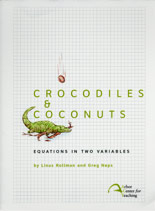
Two books by Linus Rollman ’96, Crocodiles and Coconuts: Equations in Two Variables and A Companionable Guide to Polynomials and Quadratics, complete a middle-grade algebra series that began with the publication of Jousting Armadillos in 2009. The books, says Linus, “present algebra from a humanities-oriented perspective,” and differ from other textbooks because they are written in the first person and can be read from cover to cover, “rather than skipped and skimmed through.” In addition, they are structured differently from most textbooks in that the problems and questions are embedded in the text itself rather than separated out as “problem sets” at the ends of lessons. Finally, they guide the students through inductive discovery of the principles of algebra, “rather than simply telling the students how to do things.” Linus teaches at Arbor School of Arts & Sciences in Tualatin, Oregon. Linus welcomes inquiries by email.

The Local World, a debut volume of poetry by Mira Rosenthal ’96, was published in September by the Kent State University Press. The work, which won the Wick Poetry Prize, is described as beautifully crafted narratives dealing with loss, travel, and salvage, but with language that “consistently rises above its cries to wonder and beauty.” A second book of Mira’s poetry translations will appear in February 2012. Learn more at Mira's website. (See Class Notes.)

Trade of the Tricks: Inside the Magician’s Craft (University of California Press, 2011) by Graham Jones ’97, assistant professor in anthropology at MIT, offers an unprecedented look inside the secretive subculture of modern magicians. Entering the flourishing Paris magic scene as a participant observer, Graham gives a first-hand account of how magicians learn to perform their astonishing deceptions. He pulls back the veil to reveal not only how magicians’ secrets are created and shared, but also how they are stolen and destroyed.

Karen Leibowitz ’99 and her husband, Anthony Myint, have written Mission Street Food: Recipes and Ideas from an Improbable Restaurant (McSweeney’s, 2011). Described as “a breath of fresh air,” and “uncommonly generous,” the book relates the story of the couple’s successful and innovative jaunt through the restaurant business in San Francisco, and comes with recipes such as Chamomile Toast Crunch (a homey dish, elevated “with a highbrow technique or two”), and with “thoughtful and hilarious” discussions of contemporary food issues. Though Karen says that the book is more about the taste of food rather than the politics of food, a portion of the book sales will go to food activism (Slow Food USA), just as they donated their restaurant profits to local charities. To learn more about Mission Street Food and the book, visit Karen’s blog.
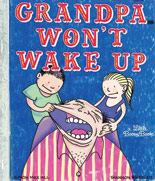
Simon Max Hill ’01 teamed up with Eisner Award–winning artist Shannon Wheeler for his book Grandpa Won’t Wake Up (BOOM! Studios, 2011). “It’s a little bit Hop on Pop and a little bit Weekend at Bernie’s,” says Simon, who also runs the casting company that found actors and extras for the hit comedy show Portlandia.

Elly Blue ’05 has a new zine, PDX by Bike, which is self-published by her new organization PDXbyBike (pdxbybike.com). The publication is a “bicycle tourist agency” for visitors to the city and serves as a companion to the organization’s web guide, with information about local history, using the transit system, bridges you can bike over, and much more.
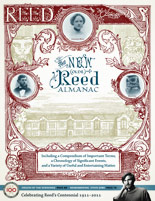

LATEST COMMENTS
steve-jobs-1976 I knew Steve Jobs when he was on the second floor of Quincy. (Fall...
Utnapishtim - 2 weeks ago
Prof. Mason Drukman [political science 1964–70] This is gold, pure gold. God bless, Prof. Drukman.
puredog - 1 month ago
virginia-davis-1965 Such a good friend & compatriot in the day of Satyricon...
czarchasm - 4 months ago
John Peara Baba 1990 John died of a broken heart from losing his mom and then his...
kodachrome - 7 months ago
Carol Sawyer 1962 Who wrote this obit? I'm writing something about Carol Sawyer...
MsLaurie Pepper - 8 months ago
William W. Wissman MAT 1969 ...and THREE sisters. Sabra, the oldest, Mary, the middle, and...
riclf - 10 months ago